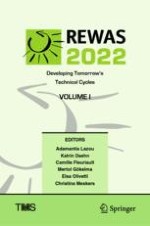2022 | OriginalPaper | Chapter
Potential Health Impact Assessment of Large-Scale Production of Batteries for the Electric Grid
Authors : Haoyang He, Shan Tian, Chris Glaubensklee, Brian Tarroja, Scott Samuelsen, Oladele A. Ogunseitan, Julie M. Schoenung
Published in: REWAS 2022: Developing Tomorrow’s Technical Cycles (Volume I)
Publisher: Springer International Publishing
Activate our intelligent search to find suitable subject content or patents.
Select sections of text to find matching patents with Artificial Intelligence. powered by
Select sections of text to find additional relevant content using AI-assisted search. powered by
